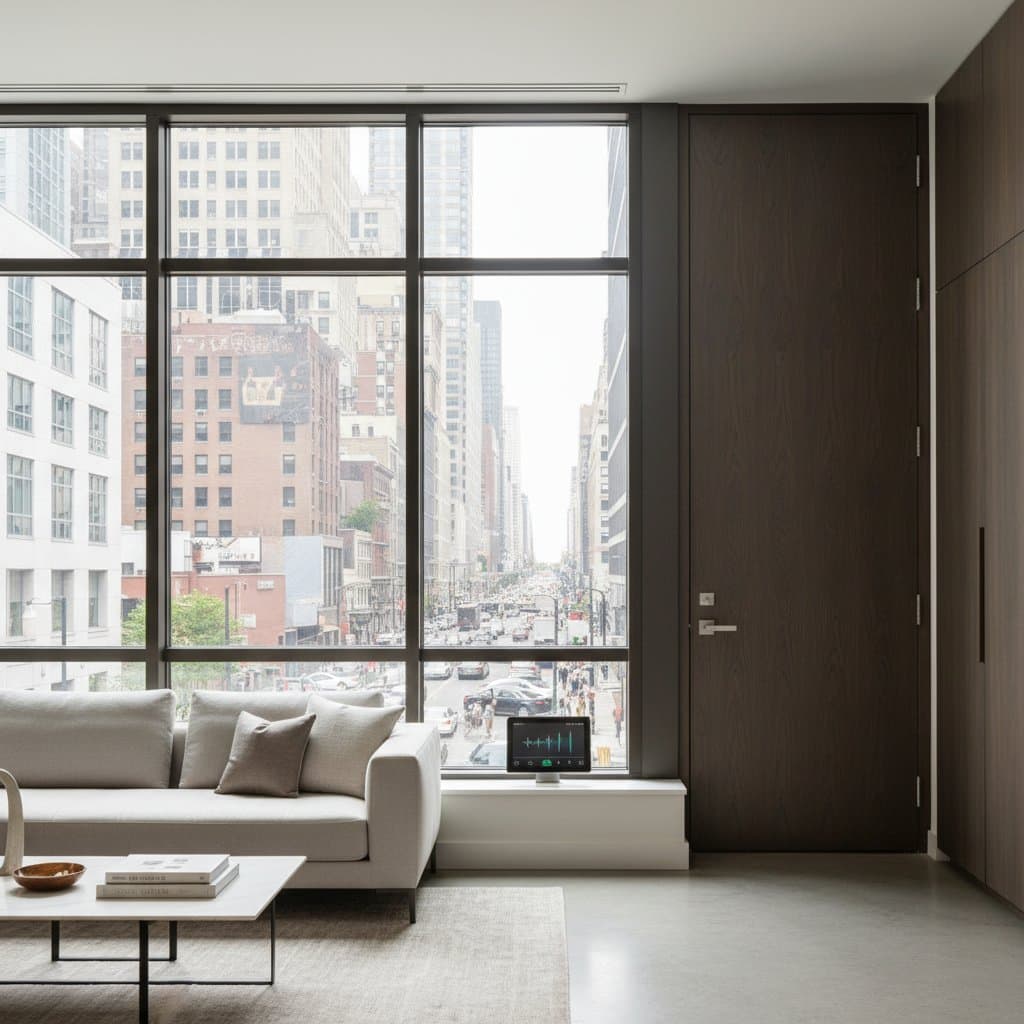Why Soundproof Doors Enhance Home Office Focus in 2025
Remote work demands a dedicated space free from interruptions. Soundproof doors address this need by minimizing household noise, which often undermines concentration. These doors integrate advanced acoustic features with practical design, allowing professionals to maintain privacy during calls and sustain deep focus on tasks.
In a typical home, sounds from family activities or appliances can infiltrate workspaces. Soundproof doors create a clear boundary, supporting both productivity and work-life balance. Homeowners who install them report fewer distractions and higher output, making the investment worthwhile for long-term remote setups.
How Soundproof Doors Function
Soundproof doors limit noise transmission through strategic design elements. Standard doors permit sound to travel via thin materials and unsealed edges. Effective models employ dense cores and tight seals to absorb vibrations and block airborne sounds.
Core components include solid construction for mass, perimeter seals for gap closure, and reinforced frames to eliminate leaks. Installation precision ensures these elements work together. The Sound Transmission Class (STC) rating quantifies performance, with values above 40 offering substantial noise reduction for home offices.
Selecting Materials for Acoustic Performance
Material choice affects sound blocking, durability, and visual appeal. Solid wood provides natural density for effective absorption at a moderate cost. Engineered wood layers offer similar benefits with greater stability and affordability.
Metal-clad options suit demanding environments with superior isolation. Composite doors allow customization, combining acoustic cores with varied finishes. Balance these factors against budget and style to select a door that enhances the room's overall aesthetic.
| Material Type | Initial Cost | Lifespan | Maintenance | Best For |
|---|---|---|---|---|
| Solid Wood | Moderate to High | Long | Occasional Refinishing | Traditional Interiors |
| Engineered Wood | Moderate | Long | Minimal | Modern Styles |
| Metal-Clad | High | Very Long | Low | Industrial Settings |
| Composite Acoustic | Moderate | Long | Low | Custom Designs |
Acoustic Ratings and Door Configurations
Doors vary by type, each with distinct STC ranges and installation needs. Solid core interiors typically achieve 30 to 40 STC, suitable for basic home offices. Acoustic-rated wood reaches 40 to 50, ideal for professional use.
Metal acoustic doors provide 45 to 55 STC for noisy surroundings. Custom composites offer flexibility from 35 to 55. Assess noise levels in your space to choose appropriately, avoiding overkill that increases expense without added value.
| Door Type | Typical STC Range | Installation Complexity | Best Use |
|---|---|---|---|
| Solid Core Interior | 30–40 | Low | General Offices |
| Acoustic-Rated Wood | 40–50 | Moderate | Studios |
| Metal Acoustic | 45–55 | High | Noisy Areas |
| Custom Composite | 35–55 | Variable | Tailored Needs |
Step-by-Step Installation Guide
Proper installation maximizes acoustic benefits. Begin with site evaluation to measure openings and identify noise paths. Ensure frames are level and walls stable before proceeding.
Preparation
Remove old doors and inspect jambs for damage. Correct any irregularities to support tight fits. Gather tools like levels, shims, and sealants for the process.
Core Installation
Position the door in the frame, aligning hinges precisely. Apply acoustic seals around edges and install a bottom sweep to seal the threshold. Test operation to confirm smooth closure without binding.
Final Checks
Conduct sound tests by speaking across the door or playing audio. Adjust seals for leaks and verify latch engagement. Add trim and finishes once performance meets expectations.
Cost Considerations and Value Assessment
Prices for soundproof doors start at moderate levels for basic models and rise with custom features. Factor in labor, which varies by complexity. High-quality options deliver lasting returns through reduced stress and improved efficiency.
Evaluate based on required STC, material durability, and design fit. Mid-range engineered wood doors often provide optimal value for home use. Long-term savings from better focus justify the upfront cost.
Integrating Doors into Home Design
Soundproof doors enhance spatial flow while controlling noise. Match finishes to existing elements like trim and flooring for seamless integration. Options with glass inserts preserve light without sacrificing privacy.
These doors support versatile rooms, such as offices that convert to guest spaces. They promote mental separation between work and rest, fostering well-being. Select styles that align with personal taste to elevate the entire interior.
Ongoing Maintenance Practices
Regular care preserves acoustic integrity. Inspect seals quarterly for wear and replace as needed. Tighten hinges to prevent misalignment and clean thresholds to ensure seal contact.
For wood doors, refinish periodically to protect against moisture. Avoid forceful closing to safeguard components. These steps extend lifespan and maintain performance over years.
Energy and Sustainability Benefits
Sealed doors minimize air movement, aiding temperature control and energy savings. Opt for sustainably sourced woods or recycled composites to support eco-friendly practices. Moisture-resistant finishes suit varied climates, ensuring reliability.
Signs It's Time for an Upgrade
Consider a soundproof door if noise frequently interrupts work or privacy suffers during virtual meetings. Echoes within the office or proximity to busy areas signal the need. Pair with rugs or panels for amplified results.
Partnering with Professionals
Seek suppliers who detail STC ratings and warranties. Choose installers experienced in acoustics for precise work. Request itemized quotes covering materials and labor to guide decisions.
Tailoring Choices to Your Space
Align door selection with usage patterns and privacy demands. Prioritize higher ratings for demanding roles and versatile designs for multi-use areas. The result is a refined workspace that boosts output and comfort, redefining remote work effectiveness.






